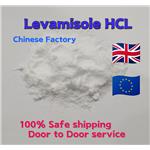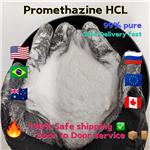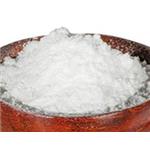Chemical Properties
White to light yellow crystalline powder, odorless, bitter taste. Melting point 227-229℃. Soluble in water, methanol, ethanol and glycerol, slightly soluble in chloroform and aether; insoluble in acetone. Stable under acidic conditions, but easy to decompose and fail under alkaline conditions.
Originator
Solaskil,Specia,France,1971
Uses
Levamisole hydrochloride is an anthelmintic. The activity of levamisole is about twice as high as that of abscisicidal, and the toxicity and side effects are lower. Levamisole can cause muscle paralysis of roundworms and then excrete them in the feces. It is mainly used as an anti-worm and anti-hookworm.
Uses
Biological response modifier with anthelmintic activity. Anthelmintic (nematodes); immunomodulator.
Definition
ChEBI: Levamisole hydrochloride is an organic molecular entity.
Preparation
Levamisole hydrochloride was prepared from racemic tetraimidazole by splitting, alkali analysis and acidification into salt.
Dibenzoyl-D-tartaric acid is boiled in water for 40min, hydrolyzed and neutralized with sodium hydroxide solution to pH 7.5, and then added to racemic tetraimidazole. The levamisole is precipitated by generating salt with bisbenzoyl-tartaric acid. After separation, add sodium hydroxide solution to PH=9 and decompose levamisole. Then dissolved in dilute hydrochloric acid solution, after decolorization by activated carbon, the filtrate was concentrated nearly dry, and crystallized by adding acetone and cooling to 0℃. Filtered and dried to obtain levamisole hydrochloride.
brand name
Ergamisol (Janssen);Vermisol.
Therapeutic Function
Antiinflammatory
Biochem/physiol Actions
Shows both immunostimulant and immunosuppressant effects, depending on several controllable factors. Very effective in treatment of ascariasis (hookworm infestation). Useful in chemotherapy of colorectal cancers, possibly due to its stimulation of IL-1 production and direct activation of macrophages.
Pharmacology
Levamisole Hydrochloride is the hydrochloride salt of the synthetic imidazothiazole derivative levamisole with anthelminthic and immunomodulating activities. In immunosuppressed states, levamisole may restore immune function by: 1) stimulating antibody formation, 2) stimulating T-cell activation and proliferation, 3) potentiating monocyte and macrophage phagocytosis and chemotaxis and 4) increasing neutrophil mobility, adherence, and chemotaxis.
Pharmacokinetics
Levamisole is rapidly absorbed from all routes of administration, with peak blood levels occurring within an hour followed by rapid metabolism and depletion principally via urinary excretion, with an elimination half-life of approximately 4 h.
Side effects
Levamisole hydrochloride oral side effects are dose-related, mild and transient. The most common side effects are fever and gastrointestinal symptoms. Other possible side effects include: rash, changes in taste and smell, granulocytopenia and/or leukopenia, arthralgia/myalgia, convulsions, failure, peripheral neuropathy, tachycardia, thrombocytopenia, vasculitis, and vertigo.
Mode of action
Levamisole is a cholinergic receptor agonist and elicits spastic muscle paralysis due to prolonged activation of the excitatory nicotinic acetylcholine receptors (nAChR) on nematode body wall muscle.
Toxicity evaluation
Symptoms of levamisole toxicity mimic organophosphate toxicity (salivation, lacrimation, urination and defecation, hyperesthesia, seizures and irritability). There is no antidote for levamisole toxicity.
The World Health Organization reviewed hematological studies in animals and humans and derived acceptable daily intake for levamisole as 0.006 mg/kg body weight. This suggests a person can ingest 0.36 mg of levamisole/day over a lifetime without any appreciable risk.
levamisole





